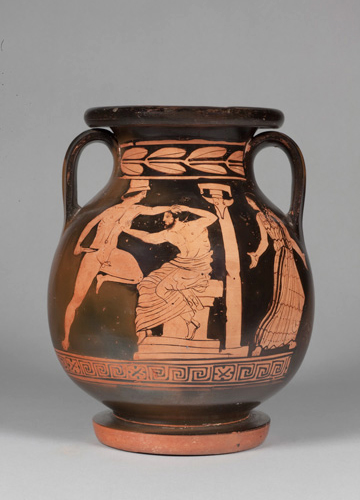When King Agamemnon, who had been fighting a war against the Trojans, returned home to Mycenae after ten long years, all was not as it should have been. Expecting welcoming arms on his return, Agamemnon was instead brutally killed by his wife Clytemnestra and her lover, his cousin Aegisthus. The king’s children, Orestes and Electra, were filled with sorrow and rage. Orestes avenged his father’s death by murdering his mother and Aegisthus.
This pelike (jar used to store liquids) illustrates the moment when Orestes plunges his dagger into Aegisthus. At the centre is a column with a bucranium (bull’s head), indicating this is a sacred place. The naked Orestes stands with his dagger, his knee thrusting into Aegisthus, who is seated upon an altar and holds out a hand in supplication. The murder is witnessed by an unidentified woman, her hands outstretched in alarm.
The vase painter seems to have been inspired by a version of the myth written by Euripides for his play Electra of ca 410 BCE, in which Orestes kills Aegisthus at an altar.

